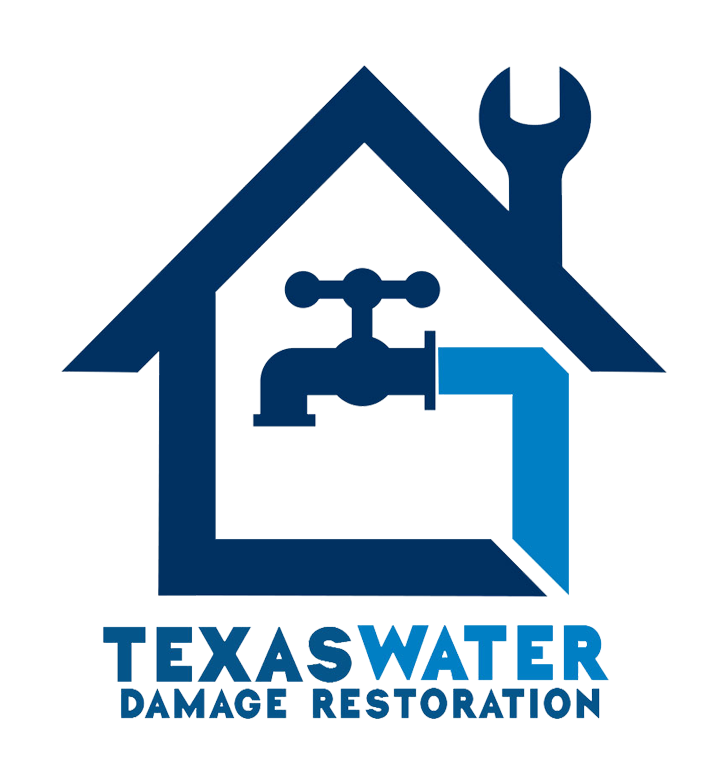Welcome to the world of ‘Smoke and Mirrors: Hidden Dangers in Post-Fire Environments.’
In the aftermath of a fire, what may appear as a mere spectacle of smoke and mirrors is, in reality, a complex web of perilous risks lurking beneath the surface. Brace yourself for an eye-opening journey into the hidden dangers that await in these post-fire landscapes.
The air you breathe, once pristine and fresh, now conceals unseen threats to your respiratory health. Toxic particles released during combustion hang in the atmosphere like deceptive mirages, ready to infiltrate your lungs with every breath you take.
But that’s not all – be prepared to face soil and water contamination that silently seeps into your surroundings, leaving long-lasting consequences for both human and ecological systems.
Hold tight as we delve deeper into this labyrinth of danger. Structural damage and instability persist even when flames have been extinguished, posing grave risks to those who dare venture through these compromised landscapes. The threat doesn’t stop there; increased risk of landslides and erosion looms over these scarred terrains like impending doom.
And let us not forget the arduous task of ash and debris cleanup – an undertaking fraught with its own set of health hazards. From asbestos-laden ruins to toxic chemicals concealed within layers of rubble, navigating this treacherous path requires utmost caution.
Prepare yourself for an enlightening exploration through these post-fire environments where smoke and mirrors veil hidden dangers that must be confronted head-on.
Air Quality and Respiratory Health Risks
Did you know that the air quality in post-fire environments can pose serious risks to your respiratory health? When a fire occurs, it releases harmful pollutants into the air, leading to increased levels of air pollution. These pollutants include particulate matter, carbon monoxide, nitrogen dioxide, and volatile organic compounds.
Breathing in these pollutants can have both short-term and long-term health impacts. In the short term, exposure to high levels of smoke and ash can cause irritation in your eyes, nose, throat, and lungs. You may experience symptoms such as coughing, wheezing, shortness of breath, and chest pain. People with pre-existing respiratory conditions like asthma or chronic obstructive pulmonary disease (COPD) are particularly vulnerable to these effects.
However, the dangers don’t end there. Long-term exposure to post-fire air pollution can lead to more severe health issues. Scientific studies have linked prolonged exposure to fine particulate matter from fires with an increased risk of heart disease, stroke, lung cancer, and premature death. Additionally, children exposed to wildfire smoke may experience developmental issues.
To protect yourself from these hidden dangers in post-fire environments:
- Limit your time outdoors when air quality is poor.nn2. Keep windows and doors closed at home.nn3. Use air purifiers or filters indoors.nn4. Follow any evacuation orders or public health advisories.
By taking these precautions and staying informed about air pollution effects after a fire event has occurred near you, you will help safeguard your respiratory health in the long run.
Soil and Water Contamination
The aftermath of a fire can leave behind a toxic legacy, like a poisoned well springing forth sadness. One of the hidden dangers in post-fire environments is soil and water contamination.
Groundwater pollution occurs when chemicals from burned materials seep into the ground and contaminate underground water sources. This can have serious consequences for both human health and the environment.
In order to address this issue, soil remediation techniques are employed to remove or neutralize contaminants in the soil. This involves processes such as excavation, where contaminated soil is physically removed from the site, or bioremediation, where microorganisms are used to break down harmful substances. These methods aim to restore the quality of the soil and prevent further contamination of groundwater.
It is crucial to prioritize soil and water testing after a fire incident to identify potential contamination hotspots. Monitoring these areas regularly can help detect any changes in contaminant levels and guide remediation efforts effectively.
Furthermore, public awareness about the risks associated with post-fire environments should be increased. Proper education on preventing groundwater pollution and implementing sustainable practices can go a long way in safeguarding our precious water resources.
Addressing soil and water contamination after a fire is vital for protecting human health and preserving our environment. Through diligent monitoring, effective remediation techniques, and public awareness campaigns, we can mitigate the hidden dangers that linger long after the flames have been extinguished.
Structural Damage and Instability
You must be cautious when assessing the structural damage and instability left in the wake of a fire, as it can leave you feeling vulnerable and uncertain about the safety of your surroundings. After a fire, it is crucial to thoroughly inspect buildings for any signs of structural damage.
The intense heat from the fire can weaken the integrity of materials such as wood, steel, and concrete, compromising their strength and stability. One of the main concerns when it comes to post-fire structural damage is determining what repairs are necessary to ensure building safety. It is important to consult with professionals who specialize in fire-damaged structures to assess the extent of the damage accurately.
They will conduct a thorough evaluation that includes checking for cracks, warping, or other signs of compromise in load-bearing walls, beams, columns, and foundations. Once an assessment has been made, appropriate measures can be taken to strengthen and repair damaged structures. This may involve reinforcing weakened areas with additional support systems or replacing severely damaged components altogether.
It is essential not only to fix visible issues but also address hidden problems that may have resulted from exposure to extreme heat during the fire. Remember that your safety should always be prioritized when dealing with post-fire structural damage and instability. By taking proper precautions and seeking professional guidance for structural repairs, you can regain confidence in your surroundings while ensuring a secure living or working environment.
Increased Risk of Landslides and Erosion
Be cautious as you navigate through the aftermath of a fire, for there’s an increased risk of landslides and erosion that can pose a threat to your safety. The structural damage caused by fires weakens the land stability, making it more susceptible to these hazards.
When vegetation is burned away, the roots that held the soil in place aren’t present anymore, leading to an increased likelihood of landslides. Additionally, without the protective layer of vegetation, rainwater can easily wash away loose soil and exacerbate erosion.
Landslides can occur suddenly and without warning, especially after heavy rainfall. The loosened soil may give way under pressure and result in dangerous cascades of debris down slopes or embankments. These powerful slides can cause significant damage to homes, roads, and infrastructure in their path.
The ecological impact of landslides and erosion shouldn’t be underestimated either. As the soil erodes away, it carries with it nutrients necessary for plant growth. This loss of fertile topsoil can hinder ecosystem recovery and hinder regrowth efforts after a fire.
To stay safe in post-fire environments at risk for landslides and erosion, avoid walking or driving on unstable slopes or near steep edges. Pay attention to weather forecasts for potential heavy rainfall that could trigger these events. Finally, seek guidance from professionals familiar with land stability assessments before attempting any restoration activities in affected areas.
Health Hazards from Ash and Debris Cleanup
Navigating through the aftermath of a fire can feel like walking on a treacherous minefield, with ash and debris cleanup posing serious health hazards. The risks associated with post-fire environments are not limited to just the flames and smoke; they extend to the remnants left behind after the fire has been extinguished.
It is crucial to understand the potential health risks and take proper precautions when engaging in ash and debris cleanup. One of the main health hazards from ash and debris cleanup is exposure to harmful substances released during combustion. The burning of materials such as wood, plastics, and chemicals can release toxic compounds into the air, which can be inhaled or come into contact with skin. These substances can cause respiratory issues, skin irritations, eye problems, and even more severe health conditions if exposure is prolonged or intense.
To protect yourself from these dangers, it is essential to wear appropriate personal protective equipment (PPE) such as masks, gloves, goggles, and long-sleeved clothing. It is also recommended to wet down ash and debris before cleaning it up to minimize dust particles being released into the air. Additionally, frequent handwashing should be practiced to prevent accidental ingestion of contaminants.
While cleaning up after a fire may seem like a daunting task, understanding the potential health risks involved can help you take proper precautions. By wearing PPE and practicing good hygiene habits during ash and debris cleanup efforts, you can minimize your exposure to harmful substances and protect your well-being.
Frequently Asked Questions
What are the long-term effects of exposure to smoke and ash on respiratory health?
Exposure to smoke and ash can have long-term effects on your respiratory health. Post-fire environments can impact your lungs, leading to chronic respiratory conditions such as asthma, bronchitis, and even increased risk of lung cancer.
Can water contaminated by post-fire environments be treated and made safe for consumption?
Can water contaminated by post-fire environments be treated? Discover how water treatment methods can effectively remove harmful chemicals and contaminants caused by post-fire contamination, ensuring safe consumption for you and your family.
How can one determine the structural stability of a building after a fire?
To determine the structural stability of a building after a fire, you need to conduct a thorough structural assessment. This assessment will evaluate the integrity of the building and ensure its overall safety.
What measures can be taken to mitigate the risk of landslides and erosion in post-fire areas?
To prevent landslides in post-fire areas, you can implement measures like installing retaining walls and erosion control systems. For example, in a case study of a fire-affected hillside, engineers used reinforced soil slopes and vegetation to stabilize the terrain and prevent erosion.
Are there any specific health hazards associated with the cleanup of ash and debris from a fire?
During the cleanup process after a fire, there are specific health risks associated with handling ash and debris. These hazards include exposure to toxic chemicals, respiratory issues from inhaling fine particles, and skin irritation.
Conclusion
In conclusion, the post-fire environment is fraught with hidden dangers that must not be underestimated. From the air we breathe to the soil beneath our feet, the aftermath of a fire can have long-lasting effects on our health and surroundings.
It is crucial to remain vigilant and take necessary precautions to mitigate risks such as respiratory issues, contamination, structural damage, landslides, erosion, and health hazards during cleanup efforts.
Remember, smoke and mirrors may hide these dangers, but knowledge and preparedness will keep us safe.

